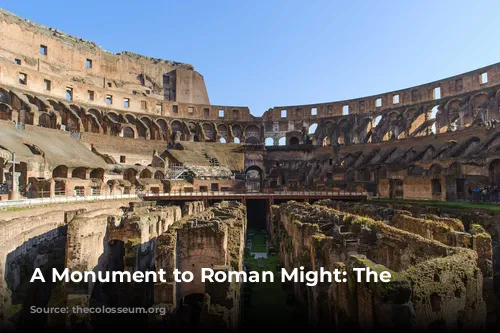The Colosseum stands as a testament to the architectural prowess of the Roman Empire, a towering symbol of its grandeur and might. Despite enduring fiery infernos, tremors of the Earth, and the ravages of time, this immense amphitheater continues to grace the landscape of Rome.
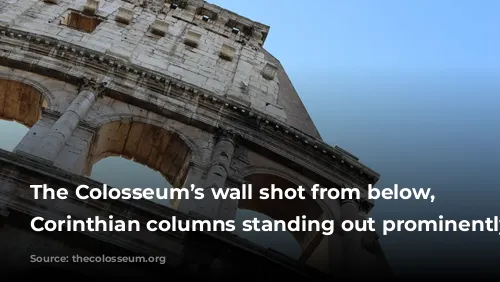
A Legacy of Flavian Emperors
The Colosseum was a monumental project undertaken by the Flavian emperors: Vespasian, Titus, and Domitian. Built between 70 and 80 AD, it originally bore the name Amphitheatrum Flavium, a fitting tribute to its creators.
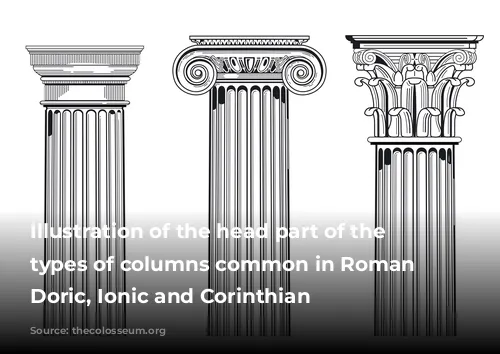
A Populist Project
Vespasian, the visionary leader who initiated this grand endeavor, sought to reclaim the hearts of the Roman people. Following the tumultuous reign of Nero, the public had grown weary of imperial rule. The Colosseum was seen as a way to reconnect with the citizenry, offering a space for spectacle and entertainment that would rekindle a sense of unity and pride.
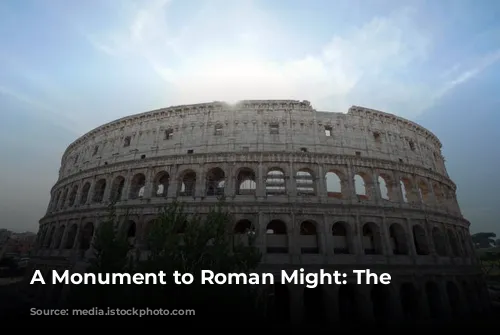
A Labor of Forced Hands
The construction of this architectural marvel relied heavily on the unpaid toil of Jewish slaves, captured during the brutal Jewish-Roman war. Their forced labor, etched in the very stones of the Colosseum, serves as a stark reminder of the empire’s ruthless power.
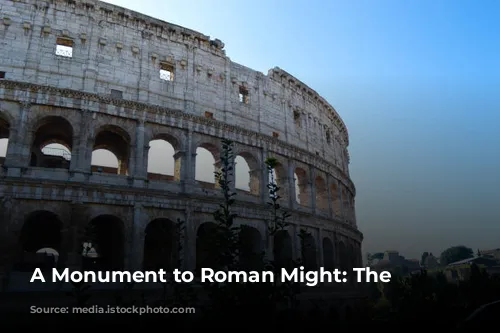
A Colossus of Stone
The Colosseum is a mammoth structure, dwarfing modern football fields in size. Measuring nearly twice the length and 1.5 times the width, it stands as a monolith of stone and mortar. The foundation was laid with travertine, a luxurious limestone quarried near Tivoli, and reinforced with Roman cement, bricks, and tuff blocks.
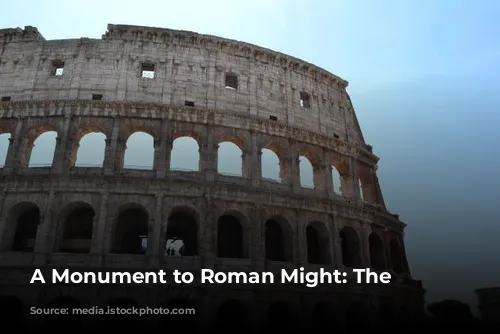
A Legacy of Iron
The massive blocks of stone were bound together by iron clamps, weighing in at an estimated 300 tons. These clamps were plundered in later centuries, leaving behind distinctive scars on the Colosseum’s walls – pockmarks that whisper tales of time’s passage.
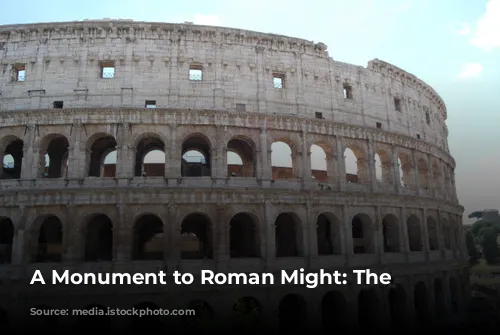
A Glittering Spectacle
The Colosseum was conceived as a showpiece of Roman engineering and artistry. The use of white travertine, its sheer height of almost 50 meters, and its sprawling footprint of 6 acres created a dazzling spectacle that inspired awe and wonder. Imagine the effect it would have on a Roman citizen, accustomed to single-story buildings, witnessing this colossal structure for the first time!
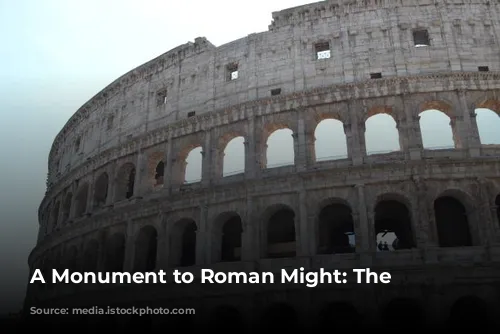
Architectural Harmony
The Colosseum is a harmonious blend of the three major architectural orders of its time: the Tuscan, Ionic, and Corinthian. From the austere simplicity of the Tuscan columns on the ground floor to the intricate elegance of the Corinthian style on the third floor, the building’s vertical journey reflects a gradual increase in stylistic complexity.
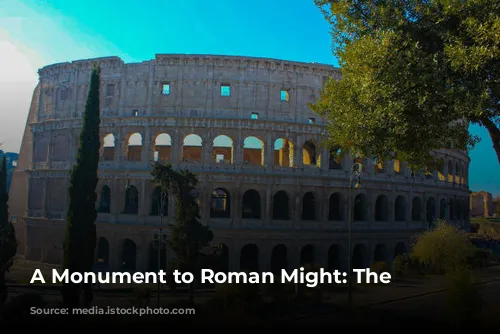
A Ring of Arches
The exterior walls are adorned with a series of 80 arches, each encompassing a half-column. These arches, largest on the ground floor, frame the external perimeter of the Colosseum, adding to its imposing presence.
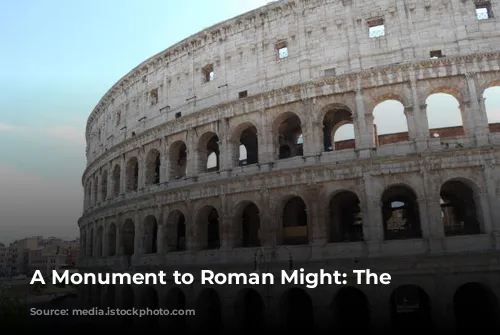
A Wall of Panels
The fourth floor breaks from the pattern of arches and columns, featuring a wall of flat panels. Recent cleaning efforts have revealed hidden details, including carvings and insets of azurite and bronze, adding a touch of refined artistry to this unique level.
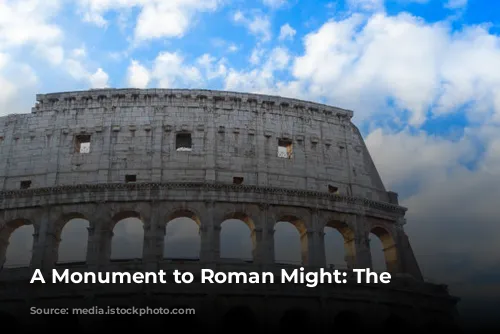
Gates of Triumph and Loss
The Colosseum has two main entrances: the Porta Triumphalis and the Porta Libitinaria. The Porta Triumphalis, the gate of triumph, served as the grand entrance for gladiators and celebratory processions. The Porta Libitinaria, named for the Roman goddess of funerals, served a somber purpose – exiting the bodies of those who fell in the arena.
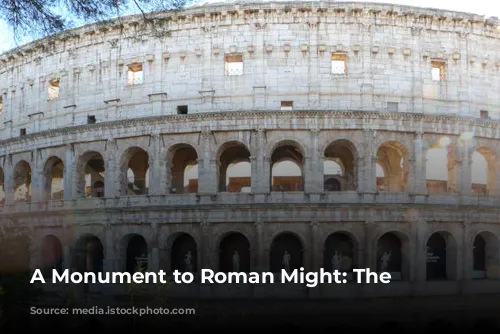
The Heart of the Colosseum: The Arena
The arena, the epicenter of gladiatorial combat, is the most distinctive feature of the Colosseum. It was a stage of both glory and despair, where gladiators, prisoners, and even wild animals battled for survival.
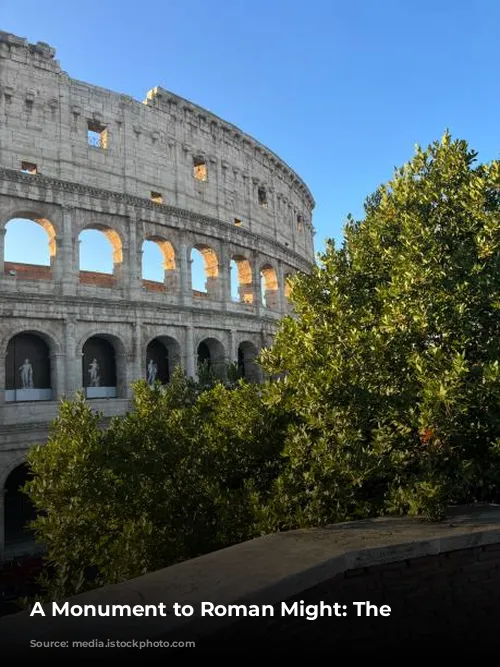
A Stage of Sand and Secrets
The arena floor was constructed from wood panels, covered with a layer of sand – a reminder of the fleeting nature of life. Hidden trap doors beneath the surface allowed for the introduction and removal of elements of scenery and the creation of dramatic effects.
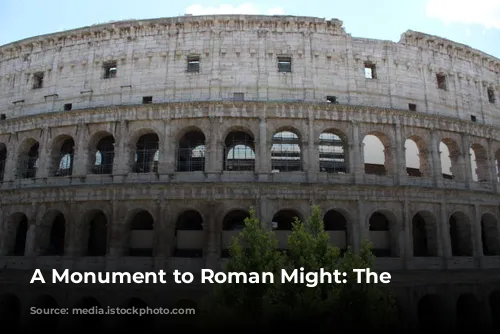
A Wall of Contrast
The arena wall, made of red and black stone blocks, offered a striking contrast to the white travertine of the Colosseum’s exterior. It was a visual reflection of the stark drama that unfolded within.
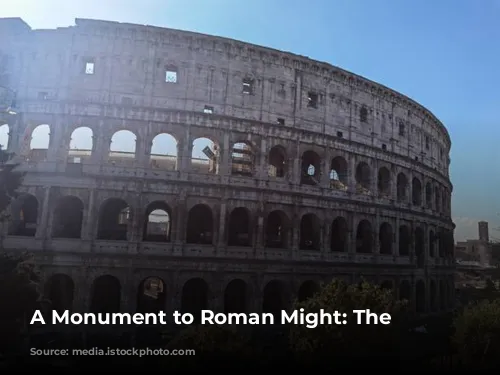
A Place for All Romans
Surrounding the arena was the cavea, the terrace where the spectators watched the gladiatorial games. The cavea was divided into three tiers that reflected the social hierarchy of Roman society.
From Elite to Ordinary
The podium, the lowest tier, was reserved for the elite, the senators and high-ranking officials. As you ascended to the gradatio and the porticus, you would find Roman citizens of lower status, with the poorest occupying the highest tiers.
Seating for Thousands
The seats, constructed from travertine stone, were designed to accommodate a staggering 80,000 spectators. Wealthy Romans brought cushions to ease their discomfort. The Colosseum was a place where all Romans, regardless of their social standing, could gather and share in the spectacle.
Access for the Masses
The cavea was organized for easy access, with scalaria (stairs) leading to the stands and vomitoria (passages) connecting to the exterior. The vomitoria were not meant for vomiting, as the name might suggest. Instead, they spouted forth the massive crowds of spectators, facilitating a smooth flow of people in and out of the Colosseum.
The Colosseum’s Hidden Depths
The Colosseum’s most important feature was not the arena, but the hypogeum, a network of tunnels and chambers located beneath the arena floor. It was a secret world where gladiators and animals were prepared for their deadly performances.
A Later Addition
The hypogeum was not part of Vespasian and Titus’s original design. It was added later, during the reign of Domitian, in an effort to improve the spectacle and expand the possibilities of the arena.
A Network of Tunnels
80 vertical shafts connected the hypogeum to the arena above, providing access for gladiators and animals. Some shafts included hegmata, movable platforms used to transport massive beasts, such as elephants, up and down. The hypogeum was also connected to the gladiators’ barracks and nearby stables, forming a complex underground network.
A Safe Passage for the Emperor
The Colosseum boasted a private tunnel that allowed the Emperor to enter and exit the building without having to navigate the throngs of spectators. This privileged access underscored his power and authority.
The End of the Naumachia
The construction of the hypogeum made it impossible to flood the arena. This meant that naumachia (mock naval battles) could no longer be held within the Colosseum. Only two naumachia had been held before the hypogeum was constructed.
A Legacy of Wonder
The Colosseum, with its awe-inspiring size, complex design, and rich history, stands as a monument to Roman ingenuity and power. It is a reminder of the empire’s grandeur and its lasting legacy. Even today, thousands of visitors from around the world flock to the Colosseum each year, captivated by its grandeur and the stories it whispers from the past. The Colosseum, a symbol of Roman strength and resilience, continues to captivate and inspire generations.
